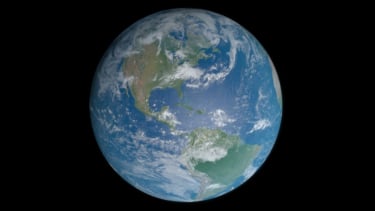Here's Why Earth Almost Ended Up with a 60-Hour Day
- YouTube
Jakarta – The length of a day on Earth is getting longer as the Moon continues to slowly move away from us.
However, there was a time this increasing day length was put on pause. From around 2 billion years ago up until 600 million years ago, the day sat at a relatively steady 19.5 hours long.
Now, scientists have discovered why – the Sun exerted its influence on the planet's atmosphere to counteract the pulling effect of the Moon's tidal grip.
If it not for this effect, Earth's day would currently be more than 60 hours long and we should consider this when developing models for the impact of climate change, says a team led by astrophysicists Hanbo Wu and Norman Murray of the University of Toronto in Canada.
Back when the Moon first formed some 4.5 billion years ago, the length of Earth's day – defined by the speed at which it spins on its axis – was much shorter.
Ilustrasi bumi
- Pixabay/Steven Goddard
Estimates place it as low as just a handful of hours. Geological records show that the day lengthened over time. This is because the Moon is gradually receding at a rate of around 3.78 centimeters (1.49 inches) per year.
The Moon's gravitational influence largely governs the tides of Earth's oceans. As it moves around Earth, the Moon's pull on the water creates ocean bulges on either side of the planet.
Meanwhile, the Moon's gravity pulls on those bulges to induce a braking effect, slowing Earth's rotation. Scientists often liken the effect to a spinning figure skater extending their arms to slow down. It adds roughly around 1.7 milliseconds to Earth's day every century.
But the ocean isn't the only fluid wrapped around Earth. Gas is also a fluid, and Earth has a lot of it.
"Sunlight also produces an atmospheric tide with the same type of bulges," Murray explained.
"The Sun's gravity pulls on these atmospheric bulges, producing a torque on the Earth. But instead of slowing down Earth's rotation like the Moon, it speeds it up."
Since the Moon's influence has been much stronger than the Sun's for most of Earth's history, the slowdown has dominated. But there was the aforementioned period during which the days stayed steady. The team found this because of the atmosphere: It was warmer and, therefore, bigger.
But a property called resonance also played a role. This is when waves travel through the atmosphere at a particular height and speed to produce a synchronization. The velocity of these waves is partially determined by temperature.
During this stable period in Earth's day-length timeline, the team found through computer modeling that the temperature produced waves that synchronized with the length of the day.
The day was about 20 hours; the resonance, the time it takes for a bulge to travel around the planet, was about 10 hours.
The speed-up effect of this atmospheric jiggery-pokery on Earth's rotation rate then neatly countered the slowdown effect of the receding Moon.





















